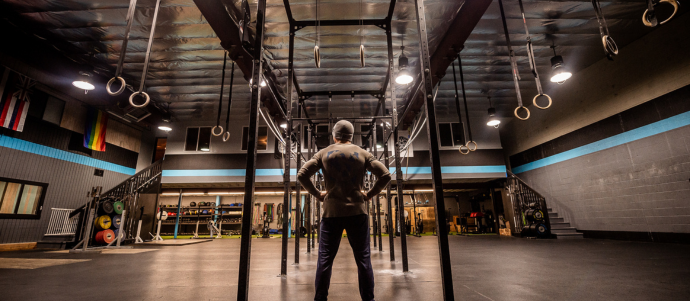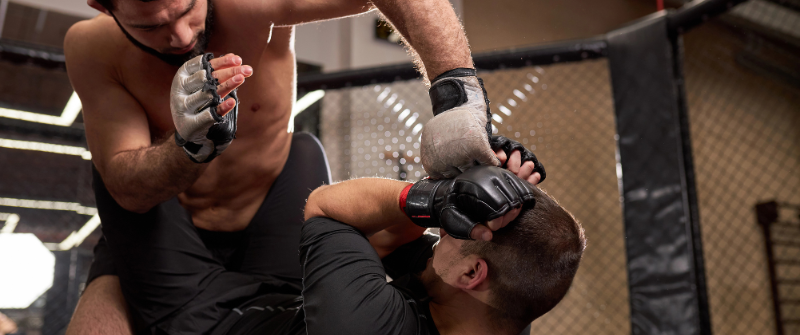.png)
- by NEXO Team
- November 13, 2023
Natural disasters rank high on the list of unexpected occurrences that can wreak havoc on businesses, and for gym owners, the impact of a natural disaster can be particularly devastating. Not only do you have to deal with potential structural damage and equipment loss, but the disruption to your business can also lead to a loss of income that can be challenging to recover from.
Having insurance for gyms is incredibly important in the face of natural disasters, so read on as we break down how gym owners can get prepared for the unexpected.
The Significance of Insurance for Gyms
Running a successful fitness business requires careful planning and management, and one crucial aspect of that is having the right insurance for gyms. Insurance acts as a safety net that protects your gym from a variety of risks, including accidents, liability claims, and natural disasters.
When it comes to natural disasters specifically, insurance for gyms becomes even more significant as it provides an extra layer of security that can help your business recover quickly when catastrophe strikes. Without adequate insurance for gyms, the financial burden of repairing or replacing damaged property and equipment can be expensive, frustrating, and in some cases, even result in the closure of your gym.
Understanding Natural Disasters and Risks
Natural disasters come in various forms, and their impact can be devastating. Some of the more common natural disasters that gym owners should be aware of include:
- Hurricanes: These powerful storms can bring high winds, heavy rainfall, and flooding, causing extensive damage to buildings and gym equipment.
- Tornadoes: Tornadoes can appear with little warning, and they can cause severe structural damage to buildings.
- Floods: Flooding is a big concern for many gyms, especially for ones that are located near rivers or lakes. It can lead to the complete destruction of gym facilities and equipment.
- Earthquakes: In areas that are prone to seismic activity, earthquakes can result in structural and equipment damage.
- Wildfires: Gyms located in wildfire-prone regions may face the risk of fire damage and smoke-related issues.
- Winter Storms: Snow and ice can cause roof collapses, equipment damage, and business interruptions.
The potential impact of these natural disasters on gyms includes structural damage, equipment loss, and overall disruptions to the business. Gym owners should always assess the specific risks associated with their location and take appropriate measures to mitigate them.
Types of Insurance Coverages Relevant to Natural Disasters
To help protect your gym from the financial burden that can result from natural disasters, you should consider several types of insurance coverage:
Property Insurance - Property insurance covers damages to the building and its contents, including gym equipment. It’s a fundamental coverage for gyms, especially for those located in disaster-prone areas. Property insurance does not traditionally cover floods or earthquakes, which is why purchasing earthquake and flood policies is important. they are separate from traditional property insurance.
Business Interruption Insurance – Business Interruption Insurance only provides coverage for physical property damage covered in the property policy. Some disasters like flood and earthquake would be excluded unless they have specific flood and earthquake policies.
Flood Insurance - If your gym is located in an area that’s at risk of flooding, purchasing separate flood insurance is extremely important as standard property insurance typically doesn’t typically cover flood damage.
Extra Expense Insurance - This coverage helps cover expenses that are related to relocating or setting up temporary operations while your gym is being repaired or rebuilt.
Assessing Your Gym’s Vulnerability
It’s essential to assess your gym’s vulnerability before you can begin to properly prepare for natural disasters. Tools and resources, such as FEMA’s flood maps and seismic hazard maps, can help you better understand the local natural disaster risks in your area and evaluate your gym’s risk profile.
Additionally, it’s important to consider factors like the age and construction of your building, the type of gym equipment you have, and the proximity to bodies of water or fault lines, as this will inform your insurance decisions and disaster preparedness efforts.
Tailoring Your Insurance Policy
Working closely with experienced insurance agents is a crucial part of tailoring a policy that meets your gym’s specific needs. Be sure to discuss the potential risks and vulnerabilities your gym faces, and take time to understand the policy’s exclusions, deductibles, and coverage limits. Customizing your insurance policy ensures that you have the right protections in place when natural disasters strike.
Pre-Disaster Planning and Protocols
When it comes to mitigating the impact of natural disasters on your gym, preparation is key. Consider the following pre-disaster plans and protocols:
1. Emergency Response Plan
Develop a comprehensive emergency response plan that outlines procedures for evacuation, communication, and equipment protection. It’s important that all staff members are familiar with this plan, so be sure to conduct drills on a regular basis.
2. Staff Training
Provide training to your staff on disaster preparedness and response so that they have familiarity with first aid training and knowledge of emergency equipment.
3. Communication Channels
Establish clear communication channels for staff and members during emergencies and ensure that everyone knows how to receive emergency alerts.
Safeguarding Gym Equipment and Facilities
To minimize damage during a natural disaster, use straps, anchors, and other securements to prevent equipment from tipping over or moving. It’s also essential to conduct building maintenance to identify and address any structural issues, so be sure to inspect the roof, walls, and foundation on a regular basis for signs of wear or damage.
Financial Preparedness
Being financially prepared can also make a significant difference in your gym's ability to recover from a natural disaster. We recommend establishing an emergency fund that covers immediate expenses, such as insurance deductibles and temporary relocation costs.
Familiarizing yourself with the claims process is another important aspect of financial preparedness, and it helps to have a system in place for documenting damages and filing claims in a timely manner.
Post-Disaster Recovery
After a natural disaster strikes, you should take immediate steps to ensure the safety of your staff and members. This includes conducting safety checks, communicating with all stakeholders, and assessing the extent of the damage.
Working with insurance providers is also a critical part of the recovery process, so be prepared to provide documentation of damages, expenses, and any other information that’s required to process your claims. In addition to having insurance for gyms, you should also consider seeking assistance from government aid programs, community support organizations, and other available resources to help with the recovery.
Learning and Adapting from Past Incidents
Finally, it’s crucial to learn from past incidents and incorporate those lessons into your future disaster preparedness strategy. This can be done by conducting post-incident reviews to identify what worked well and what needs to be improved. You can then use this information to update and enhance your gym’s emergency response plan.
Conclusion
When it comes to unpredictable natural disasters, gym owners have to prioritize preparedness and comprehensive insurance for gyms. Assess your gym’s vulnerability, tailor your policy to your needs, and establish pre-disaster protocols to protect your staff, members, and equipment.
And always remember that natural disasters can happen at any time, so being proactive in your preparations can make all the difference when it comes to the survival of your gym. Stay prepared and keep your gym resilient in the face of unexpected events.
Categories
Fill out a short form to contact us with your questions or to receive a customized quote.
Recent Posts
-
 Is Your Pilates Studio Prepared for a Medical Emergency?
January 5, 2026
Is Your Pilates Studio Prepared for a Medical Emergency?
January 5, 2026 -
 NEXO’s Affinity Program: How Fitness Suppliers and Associations Can Partner for Profit and Protection
December 5, 2025
NEXO’s Affinity Program: How Fitness Suppliers and Associations Can Partner for Profit and Protection
December 5, 2025 -
%20(1).png) How to Insure an MMA Gym Without Paying for Coverage You Don’t Need
December 5, 2025
How to Insure an MMA Gym Without Paying for Coverage You Don’t Need
December 5, 2025 -
 Mastering Liability for Jiu-Jitsu Tournaments and Martial Arts Events
December 5, 2025
Mastering Liability for Jiu-Jitsu Tournaments and Martial Arts Events
December 5, 2025 -
 From Zen to Zoning: What Every Yoga and Pilates Studio Owner Should Know Before Signing a Lease
December 5, 2025
From Zen to Zoning: What Every Yoga and Pilates Studio Owner Should Know Before Signing a Lease
December 5, 2025
